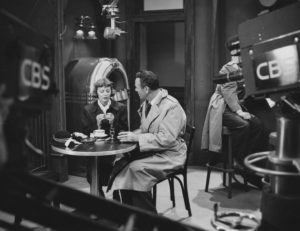In today’s Wall Street Journal “Sightings” column, I make a modest proposal that could transform American theater. Here’s an excerpt.
* * *
What do Lucas Hnath, Lynn Nottage, J.T. Rogers and Paula Vogel have in common? If you recognize them as the authors of “A Doll’s House, Part 2,” “Sweat,” “Oslo” and “Indecent,” which received this year’s best-play Tony Award nominations, it’s a safe bet that you’re a serious theater buff. If, on the other hand, none of their names are familiar to you…well, I’m not surprised. Fifty years ago, the best-play nominees were Edward Albee’s “A Delicate Balance,” Frank Marcus’ “The Killing of Sister George,” Harold Pinter’s “The Homecoming” and Peter Shaffer’s “Black Comedy.” The average educated American would not only have heard of all four plays, but would likely have recognized the names of their authors. Today, by contrast, most people don’t know much about Broadway plays, much less the men and women who write them.
 Why not? Because American theater no longer has what I call a “fame mechanism.” A half-century ago, Broadway was regularly covered by weekly newsmagazines like Time, Life and Newsweek, and it also figured prominently on such network TV series as “The Ed Sullivan Show,” “The Tonight Show” and “What’s My Line?” I saw Arthur Miller’s “Death of a Salesman,” my first Broadway play, on CBS—in prime time!
Why not? Because American theater no longer has what I call a “fame mechanism.” A half-century ago, Broadway was regularly covered by weekly newsmagazines like Time, Life and Newsweek, and it also figured prominently on such network TV series as “The Ed Sullivan Show,” “The Tonight Show” and “What’s My Line?” I saw Arthur Miller’s “Death of a Salesman,” my first Broadway play, on CBS—in prime time!
Theater’s “fame mechanism” broke down, however, as the old-time legacy media started to lose their dominant place in American culture. At the same time, live theater became geographically decentralized: “A Doll’s House, Part 2” was first performed by California’s South Coast Repertory, “Sweat” by the Oregon Shakespeare Festival, “Oslo” by Lincoln Center Theater at its off-Broadway house and “Indecent” by the Yale Repertory Theatre. That these plays were subsequently produced on Broadway ensures that they’ll have an afterlife. But what does it say about the state of American theater that dozens of other plays of comparable quality receive regional premieres every season without ever reaching Broadway? Is there another way to spread the word about such plays, as well as the outstanding companies that stage them?…
What if six top-tier regional theaters, backed by a foundation or two, were to join forces and start a national consortium that taped well-produced versions of live performances of a half-dozen plays—three new shows, three revivals—each season, then made them universally available for free? They could then be shown on local public-TV stations, or disseminated via more up-to-date methods like movie-theater simulcasts or Netflix-style streaming video….
In addition to publicizing its six member companies, my hypothetical Regional Theater Broadcast Consortium would be good for American theater as a whole. A telecast of a play, after all, is not merely a piece of entertainment, but an advertisement for live theater in general. It introduces everyone who watches it to another entertainment option—getting off your couch and into the nearest theate….
* * *
Read the whole thing here.
Lee J. Cobb stars in a TV version of Arthur Miller’s Death of a Salesman, directed by Alex Segal and originally telecast by CBS on May 8, 1966:


